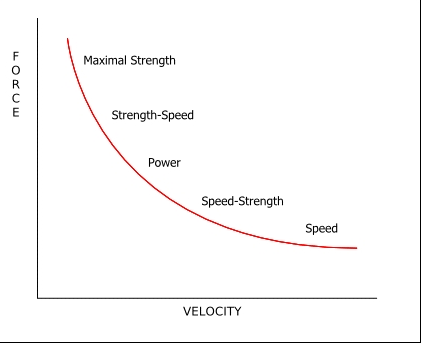Engineering The Athlete: Neural Adaptations
The following article is an excerpt from one of my mentors, Nick Curson of Speed Of Sport and serves to shed some light into the concept of neural adaptations to somewhat demystify the idea of Nervous System Training.
Russian Scientists were on the forefront of sports training for many years. The amount of time and research they have invested into sports performance training, more specifically the physiological and neural effects of training, as well as the role of the nervous system in training, helped them dominate many sports at the highest levels.
Much of the training we utilize is based heavily on the research of Dr. Yuri Verkhoshanky and other great sports trainers of the Eastern Bloc. These trainers helped to pave the way for conditioning athletes. Using what we have learned about the nervous system from these great scientists, we know that the nervous system is the critical factor when is comes to rate of force development, speed, agility, coordination, timing, as well as other traits of elite athleticism.
Our training encompasses a broad spectrum of areas often overlooked by most strength and conditioning coaches and personal trainers. We place a strong emphasis on involuntary response, proprioception, rate of force development, balance, coordination, focus, timing, neuromuscular efficiency, kinesthetic awareness, etc... two examples of exercises which are a staple at our facility are exercises to strengthen the feet and balance training exercises. Proprioceptive instability exercises have been scientifically proven to reduce injuries in athletes, older people, as well as improve rate of force development, yet they are completely neglected in most High School, Collegiate, and Professional Strength and Conditioning programs. See this study on balance training to understand more.
“Rate of force development, rather than absolute force itself, is the crucial factor in successful athletic performance.”
Despite popular belief, conventional, slow, heavy weightlifting, which focuses primarily on developing muscle hypertrophy, is not a comprehensive means of developing better athletes in non-lifting (CrossFit, Strongman, Powerlifting, etc.) sports. Science has proven many times over that the use of heavy training loads and slow resistance movements diminishes the speed-strength qualities of athletes as well as inhibits the the ability to perform complex motor tasks usually during the most technical phases of sports movements. These are conflicting ideas to think that training for absolute or maximal strength will improve speed as the two are different motor tasks. In simpler terms, the slower the movement, the slower and less efficient the muscular contraction and movement become as a result of the training. This Inhibits the ability to maximize the speed and power of the contraction of the agonist muscle performing the movement in relation to the antagonist.
Lifting with slow, cumbersome, heavy loads trains the body in a way that is the equivalent to driving with one foot on the gas and the other foot on the brakes simultaneously, in the simplest terms it is "muscle memory" you move the way you train.
“The influence of maximal isometric strength on dynamic force and velocity is greater in heavily resisted, slow movements, although there is no correlation between maximal velocity and maximal strength.”
So why do so many people think heavy weightlifting programs will make them better athletes? Why has it become a staple training method for high schools and colleges across the US?
They have based their methods of training athletes on the physics of producing force as it pertains to weightlifting rather than the physics of speed and functional (relevant, integrated) movements as they pertain to sports. Conventional methods place a heavy emphasis on muscular hypertrophy without any regard as to the functionality of the training as it pertains to sports specific movements.
The "Force-Velocity Relationship" that is often referred to in weightlifting has been poorly misinterpreted as it pertains to sports, and does not accurately describe the Force Velocity Relationship as it pertains to sports movements, the two are inversely proportionate. (Bosco C., 1982)
“Being a creative coach means trying new training methods to see if they are effective and integrating them in a training system”
Plyometrics are exercises that focus on activation of the stretch shortening cycle as explained below. Plyometrics have been shown to give high level athletes the greatest gains in terms of speed, reaction, and functional rate of force development as it pertains to sports. Read this study to learn to see how plyometrics dominate other exercises...... Here's another. and another..
Stretch-Shortening Cycle (SSC) - The stretch reflex is utilized frequently during sport because most movements involve the two phases of muscular contraction. An eccentric phase, which is the muscle lengthening under tension, is followed by a concentric phase in which the muscle is shortened. Attaining a pre-stretch of the muscle causes it to be lengthened eccentrically so tension is developed in the muscle, similar to a rubber band. This stored energy created by the tension can be used to help increase the strength of the following concentric contraction. This concentric contraction must immediately follow being stretched or the tension created will dissipate as heat. An example is a quick countermovement before jumping which allows the quadriceps to be stretched eccentrically so that the following concentric contraction can be stronger. The amount of tension created by stretching the muscle is dependent on the degree and the speed of the muscle’s pre-stretch.
Exploiting the elasticity of the muscle and the stretch reflex is referred to as using the stretch-shortening cycle. It has been shown that the faster the muscle is stretched eccentrically, the greater the force will be on the following concentric contraction.
Here are some basic facts about the Nervous System that may help you get a better idea as to why we advocate this type of training:
Nerves - Sensory nerves receive information to process stimuli, equilibrium/balance, hot and cold, heavy and light, this information is then sent to the spinal chord then to the brain and is processed, "instructions"are then transmitted to motor nerves on how to react to the stimuli. This happens very quickly, BUT can be trained to become even faster.
By focusing on increasing sensory stimulation as well as sensory/motor nerve communication we can increase the frequency of their communication signals so that reaction can actually be processed within the spinal chord, bypassing the brain. This type of "propriospinal process" keeps the body in a "stand-by mode", ready to react quicker.
Ex: If you were walking on ice and your foot slipped, surely you felt your reflexes engage, without even thinking your hands/arms would most likely maneuver to maintain balance. See this study on balance training to understand more.
The Nervous system controls the speed at which a person can maximally contract a muscle and produce force otherwise known as Rate of Force Development (RFD).
Our methods focus on training athletes to develop a higher rate of force than traditional weightlifting as it pertains to sport. Compare a heavy bench press to a light medicine ball throw. A heavy bench press causes muscles to become very tense and the rate at which it produces strongest muscular contraction is very slow. A similar movement patter but with a much greater velocity using a plyometric medicine ball throw, quickly contracts the muscle at a much greater speed producing a greater amount of "sports" force.
Recently we tested : The amount of force produced by a 300lb bench press vs.the amount of force produced by a 35lb plyometric throw. The muscular contraction for the 35lb throw produced over three times as much force despite throwing a weight almost 10 times less. Continuous slow heavy training of a muscle to contract at a slow speed will eventually decrease the amount of RFD of the unloaded muscle. (Kotz,1976,)
The nervous system controls proprioception. Proprioception refers to the body's ability to sense movement within joints and joint position. Proprioception enables us to know where our limbs are in space.. It is important in everyday movements but especially so in complex sporting movements which require precision. This too can be trained and advanced to a higher level by stimulating and increasing the speed and frequency of the signals relayed between sensory and motor nerves. We can train athletes to improve in these areas.
We can help you become a better athlete. You can become more coordinated, and stronger, more powerful, and explosive, develop a quicker first step, become more flexible, improve your posture, improve throwing velocity, and develop an overall balanced body.



